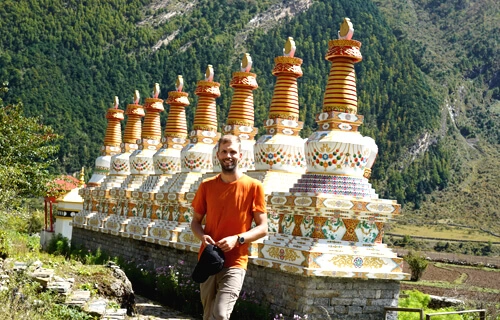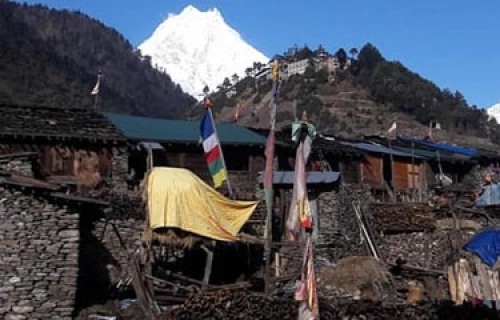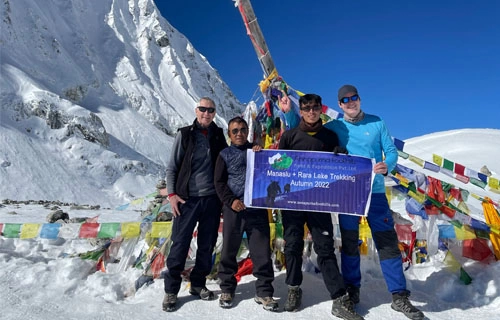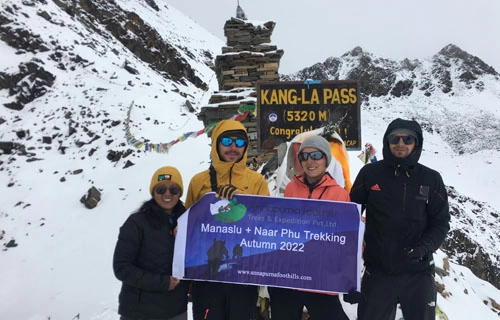The Manaslu Region appeals to those adventure seekers who want to experience the less commercialized, remote parts of Nepal where nature and culture have remained untouched by globalization and modernization. This rugged and beautiful valley has only been open to tourism since 1991, and as of now, few travelers have ventured there.
Generations ago, refugees from Tibet arrived in the region and built stone-roofed villages such as Namrung, Lho, Samaguan, and Samdo. The brave refugees found sanctuary in a beautiful but harsh land. These ancient stone villages clinging to the sides of steep valles look out on the spectacular Mt. Manaslu, 8163m, and the Himalchuli Massif inside the Manaslu Conservation Area. Their simple lifestyle has changed little over time. Small terraced fields like colored patchwork are farmed with primitive methods.There is no farm machinery to interrupt the sounds of nature. While living in complete harmony with nature is beautiful, it does represent a lot of hard labor.
Their Tibetan Buddhist culture has been preserved intact as few outside influences have reached this remote region of Nepal. Stupas, mani stones and prayer flags adorn the trail and are a constant reminder of the Tibetan Buddhist ancestry of the inhabitants.
An optional side trip to the Manaslu Circuit is the Tsum Valley. Branching off from Philim on the first part of the circuit, this trek leads to a valley as isolated and untouched as any in Nepal. Only opened to foreign trekkers in 2008, Tsum Valley is the home to a small indigenous people of Tibetan origin, known as Tsumbas. Geographically close to Tibet, this valley is surrounded by mountains including Himalchuli, Sringi, and the Ganesh Himal.



